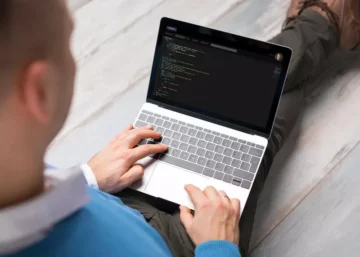As expertise continues to evolve, so does the landscape of containerisation. The true measure of any expertise lies in its real-world functions and the tangible advantages it brings to organisations. Let’s embark on a journey to unravel the mysteries of containers and navigate the expansive realm of Docker.
This complete information goals to demystify these parts, offering you with the data and best practices to grasp Docker image management. Okay, let’s look at the terminology right here and understand what we’re speaking about. The layers which have been written are the lower directories.
Are you a developer and love writing and sharing your data with the world? Be A Part Of our guestwriting program and receives a commission for writing superb technical guides. We’ll get them to the rightreaders that may appreciate them. This approach brings in a complete Ubuntu distribution with many pointless packages.
Correctly Deal With Apt-get And Different Bundle Managers
As An Alternative of placing in dependencies locally, developers can run containers that embrace all the necessary software. This helps stop the “works on my machine” drawback by guaranteeing each team member works in an identical environment. Utilizing Docker Compose, developers also can manage complicated environments that require a number of services like databases, cache servers, and messaging queues. Docker is an open-source platform designed to automate the deployment of functions inside isolated containers. Docker containers are rather more efficient than virtual machines, as they share the host OS kernel, decreasing useful resource overhead. Docker has reworked the method in which we build, deploy, and manage functions, enabling developers to create lightweight, transportable environments that work seamlessly across completely different systems.
That’s a 66% change simply by altering this one command! Earlier Than we dive deeper, let’s clarify what a Docker picture is. A Docker image is a light-weight, standalone, and executable package that includes every little thing needed to run a piece of software program.
You wish to make positive that base image is one thing that you know the place it came from and who created it. This is where things like Docker trusted content – there’s Docker official images or Docker verified publisher photographs or managed photographs might help with this particular piece. Or there are other https://deveducation.com/ distributors on the market who present that as nicely. But any means you do it, you just need to know the place that base image is coming from. There are most of the issues you have to learn about docker pictures.
Docker Desktop Gui Construct View (29:
- You can’t change a layer as soon as it’s really written to the file system.
- And then to construct this we would use the docker construct command.
- This might be from duplicating files throughout layers, moving information throughout layers, or not totally removing recordsdata.
- But you need some data of docker images if you need to use Dockertags effectively.
The course guides you step-by-step through setting up your development environment, including Docker Desktop and Visible Studio Code. You’ll dive deep into Docker fundamentals—learning tips on how to create, manage, and optimize containers. You’ll optimize Docker picture builds through caching methods and develop multi-container applications with Docker Compose. No prior Docker expertise is required, however primary familiarity with Linux and command-line interfaces might be useful. Whether Or Not you’re a beginner or trying to reinforce your skills, this course provides the right hands-on learning experience. All right, one of many key things to grasp when you’re constructing an image is what actually wants to alter frequently.
Utilizing Container Construction Tests For Container Acceptance Testing
Construct Checks is among the newer options that’s within the builder at this point. What construct checks are doing is basically offering you information on issues that could be going on in your Dockerfile that you may not be conscious of. You may have a Dockerfile that seems to be executing properly, but there may be issues in it which are incorrect that you maybe want to bear in mind of. This goes to give you these greatest practices and checking and what you’re doing with your Dockerfile. You’re going to get a list of warnings and steering on tips on how to resolve these issues inside this.
By the end of this section, you should have a working CICD pipeline that streamlines deployments in a real-world DevOps setting. In this module, we will set up the muse for the course by outlining the necessary prerequisites and key takeaways. We will also discover a hands-on Docker demonstration to provide a transparent understanding of its capabilities and significance in trendy why do we need docker improvement workflows. Discover Docker’s official documentation, or strive utilizing Docker Compose and Kubernetes to manage multi-container functions. The practices outlined right here ought to function tips rather than inflexible rules.

It’s a SHA256 hash generated primarily based on the image’s content and configuration. The digest is immutable, that means as quickly as created, it by no means modifications for that particular image. This property makes digests invaluable for guaranteeing consistency and safety in your Docker workflows. One tag that deserves special attention is the newest tag. By default, if no tag is specified when pulling a picture, Docker assumes you need the latest model.

The first Ollama Docker image was released back in 2023. But until just lately, I at all times used it with a native set up. Ollama has been a game-changer for operating giant language models (LLMs) regionally, and I’ve lined fairly a few tutorials on setting it up on different devices, including my Raspberry Pi. You can read extra about this in docker’s official documentation to host your individual docker registry. The above linked article describes how to create a Docker image that works on different hardware architectures and working techniques. Past its core options, Docker has fostered a wealthy ecosystem of instruments and projects that complement and lengthen its capabilities.
So if we go to the instance on the proper, you can see right here we’ve one run command and we’re utilizing the ampersands and slashes to mix all these totally different instructions into one. And what this implies is that all of this will execute directly and all of it’ll execute together and the result of that might be written to the file system. So the image created from the instructions on the left can be 460 MB; the functionally similar image on the proper is only 157 MB.
